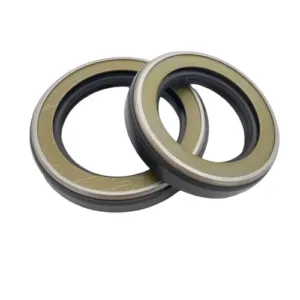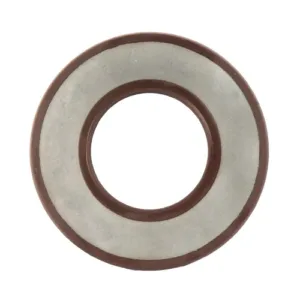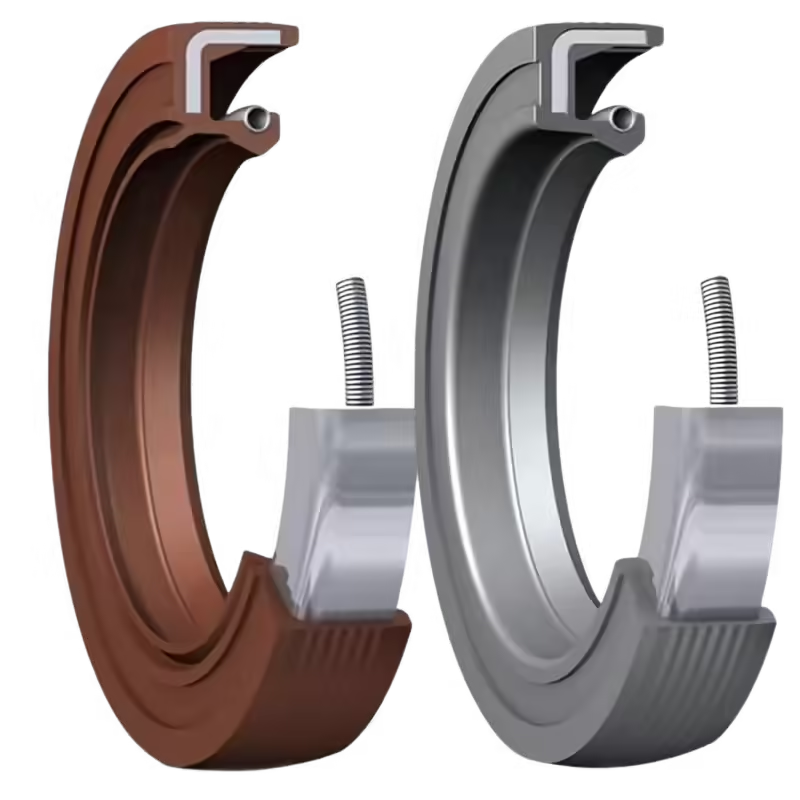How to Choose the Oil Seal You Need
Introduction
Selecting the right oil seal is crucial for the efficient operation and longevity of industrial machinery. Oil seals, often overlooked, play an essential role in preventing fluid leakage, protecting bearings, and minimizing contamination. Choosing the wrong seal for your application can lead to equipment failure, costly repairs, and unplanned downtime. With a wide range of options available, selecting the right oil seal involves considering factors such as application requirements, material compatibility, and environmental conditions.
This guide will help simplify the process and ensure that you choose the right oil seal for your needs, improving your equipment’s reliability and performance.


1. Understand Your Application Requirements
The first step in choosing the correct oil seal is understanding the specific needs of your application. The primary function of an oil seal is to prevent leakage, protect bearings, and reduce contamination. It’s essential to consider the operating environment and conditions of the machinery in question. Key factors to assess include:
- Types of Applications: Different applications, such as automotive, industrial machinery, and hydraulic systems, require specific sealing solutions.
- Operating Conditions: The operating temperature, pressure, speed, and type of fluid (e.g., oil, water, chemicals) must all be factored into the selection process. Each condition influences the material and design of the seal needed for optimal performance.
2. Identify Key Oil Seal Types
There are several types of oil seals, each designed for specific purposes and applications. Here are some of the most common seal types:
- Standard Lip Seals: These are general-purpose seals, suitable for most applications where a simple and cost-effective solution is required.
- Double-Lip Seals: Ideal for preventing external contamination, double-lip seals provide an added layer of protection on both sides of the shaft.
- V-Ring Seals: Typically used in light-duty applications, V-rings offer a compact and effective sealing solution with limited sealing pressure.
- Tapered Oil Seals: Often used in automotive and heavy-duty machinery, these seals can accommodate axial movements and ensure a proper fit under high pressure.
- Metal-Cased Seals: For rugged applications requiring higher mechanical strength, metal-cased seals are ideal. They provide superior durability and resistance to external forces.
3. Consider Material Compatibility
The material of the oil seal is one of the most crucial factors in determining its effectiveness. The seal must be compatible with the fluids it will come into contact with, as well as withstand the temperature and pressure conditions of the application.
- Nitrile (NBR): Nitrile is one of the most widely used materials for oil sealing due to its general resistance to oils, fuels, and water.
- Fluorocarbon (Viton): Viton is ideal for high-temperature and chemical resistance, making it suitable for extreme conditions.
- Silicone: Best for high and low temperature extremes, silicone seals are often used in food or medical applications.
- Polyurethane & PTFE: These materials are used in high-performance sealing applications that demand exceptional wear resistance, chemical compatibility, and durability.
4. Temperature and Pressure Tolerances
The oil seal must be capable of withstanding the temperature and pressure conditions of the specific application. Seals should be selected based on their ability to handle the extremes they will encounter.
- High-Temperature Seals: Materials like Viton and silicone can withstand temperatures of up to 300-350°C for Viton and even higher for specialized applications.
- Low-Temperature Seals: Nitrile or other flexible materials maintain sealing performance even in low temperatures, such as down to -40°C.
- Pressure Resistance: It is important to ensure that the selected oil seal can handle the pressure conditions of the system without compromising its sealing function.
5. Evaluate Shaft and Housing Dimensions
Proper sizing is essential to ensure the oil seal fits perfectly and functions effectively. Take accurate measurements of the shaft diameter and housing dimensions to ensure proper alignment.
- Shaft Diameter: Measure the shaft diameter with precision tools such as calipers, ensuring it matches the inner diameter of the oil seal.
- Shaft Surface Finish: A smooth shaft surface prevents wear and ensures a better sealing contact. Rough surfaces can lead to premature seal failure.
- Housing Size: Ensure the housing size matches the width and outer diameter of the oil seal. Misalignment can lead to ineffective sealing and leakage.
For a detailed guide on how to measure oil seals accurately, check out our article on How to Measure Oil Seals.
6. Durability and Performance Considerations
Durability is another critical factor when selecting oil seals. Consider the following aspects to ensure the longevity and performance of your seals:
- Wear Resistance: For high-wear applications, such as rotating shafts or heavy-duty machinery, opt for seals made from abrasion-resistant materials.
- Contamination Resistance: Choose seals that feature dust lips or other protective elements to prevent contamination from external debris.
- Environmental Factors: For seals exposed to UV rays, ozone, or chemicals, select materials with protective coatings or enhanced chemical resistance.
7. Installation and Maintenance Factors
Ease of installation and maintenance will play a significant role in the overall efficiency and cost-effectiveness of the sealing system.
- Ease of Installation: Choose oil seals that can be installed without specialized tools or equipment. This reduces installation time and the likelihood of damaging the seal during the process.
- Maintenance Needs: Consider seals with longer lifespans and ease of inspection, which will reduce downtime and maintenance costs.
- Sealing Effectiveness Over Time: Understand the expected lifecycle of the seal and its ability to maintain sealing performance throughout its life.
Be sure to avoid common installation mistakes such as incorrect shaft alignment or using improper tools that can damage the seal.
8. Cost vs. Quality Tradeoff
While budget constraints are a consideration, it’s essential to balance cost with the seal’s reliability and longevity. High-quality seals may come with a higher upfront cost but will often reduce downtime, prevent costly repairs, and last longer, providing greater value in the long run.
Conclusion
Choosing the right oil seal is a critical decision that impacts the reliability and efficiency of your equipment. By carefully considering the application requirements, seal type, material compatibility, and other factors, you can ensure that your machinery performs optimally while minimizing maintenance costs. Always consult with industry professionals or suppliers to make the best choice for your specific needs.
For more information, visit our website at drorubber.com or contact us via WhatsApp: +0086 15815831911, WeChat: +0086 13784044874.





